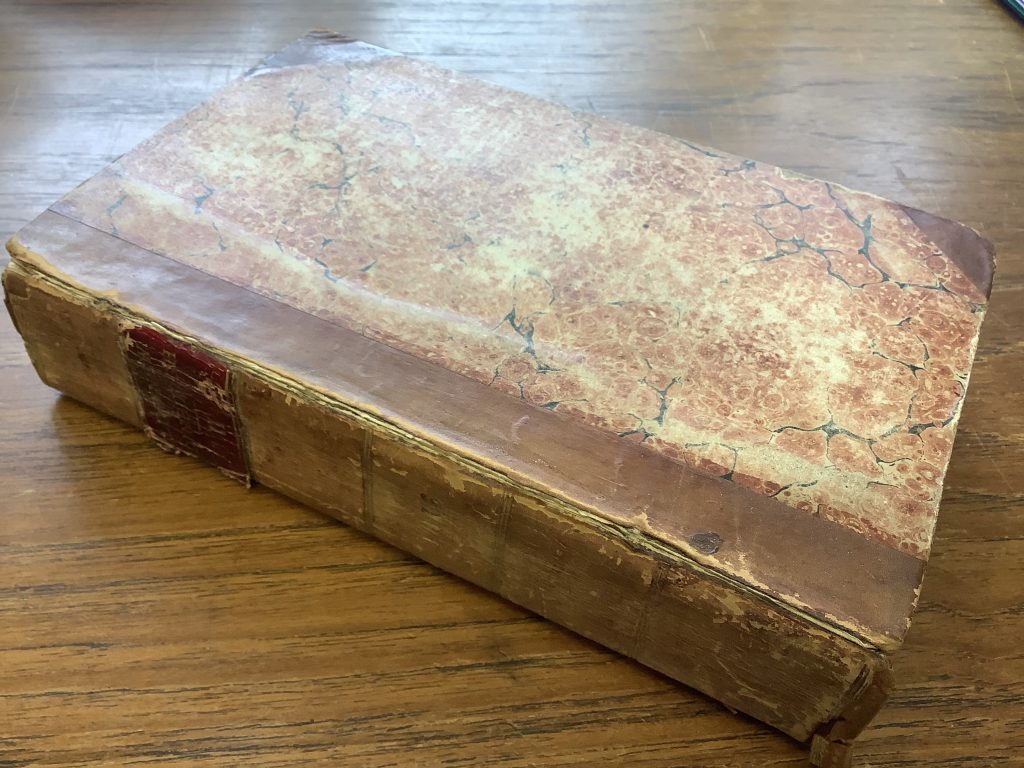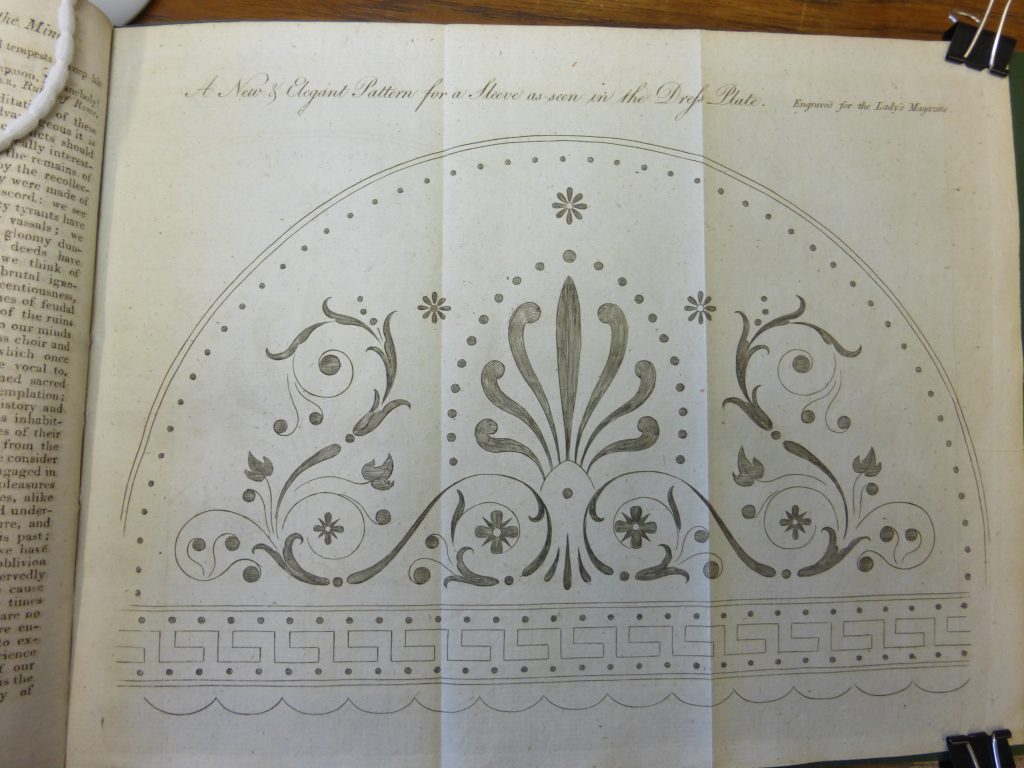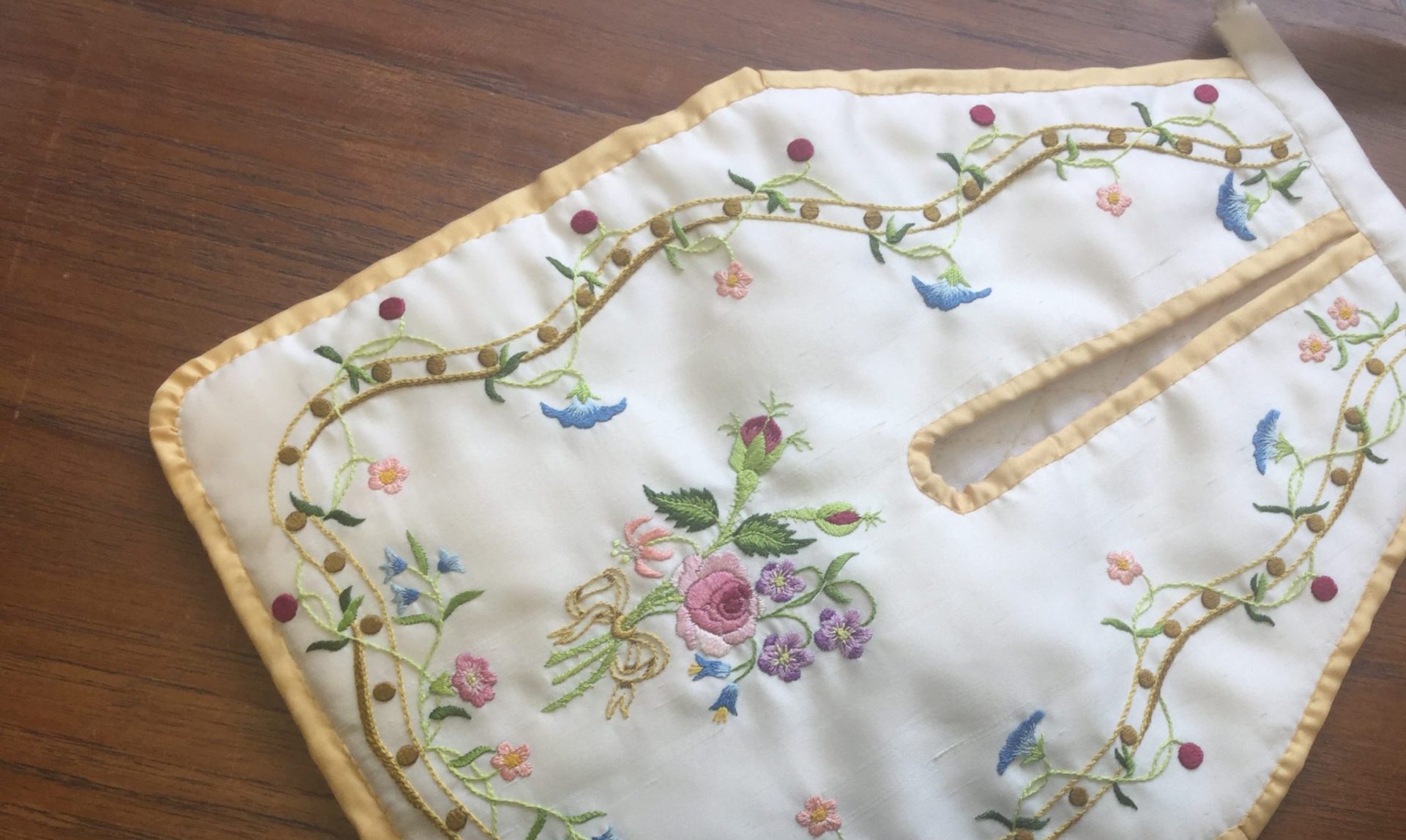“The Lady’s Magazine, or Entertaining Companion for the Fair Sex, Appropriated Solely to their Use and Amusement” was first published in August 1770 and continued for 13 issues a year – monthly, plus a supplement at the end of December –until 1832. It was extremely popular, with a circulation at its height of 15,000 copies, and in practice the readership was probably much wider.
The Lady’s Magazine was a real miscellany, including biographies, travel writing, essays on popular or feminist issues, short stories, serialised novels, articles on science, reviews of theatre or opera productions, fashion, recipes for cosmetics, home and foreign news, advertisements, and poetry. It was even multi-media, including sheet music, engravings, portraits and allegorical illustrations. A combination of Good Housekeeping and Cosmo, perhaps!
Its great fascination for me lies in the embroidery patterns, published in (almost) every issue from its inception in August 1770 until 1819. That makes 50 years x 13 patterns – over 600 potential original period embroidery patterns!
Sadly, most of these embroidery patterns seemed to have been lost. The process in the 18th century was to collect the issues published each year, and take them to a bookbinders to be put into a single volume, which is how the majority have come down to us. There were even ‘Instructions To The Binder’ in the final Supplement, telling him where each plate was to be placed in the volume. However, these instructions never included the embroidery patterns which were largely left out of the bound copies, along with most of the adverts.

The reasoning is clear: the intention was for the patterns to be used, like the pull-out transfers in more modern equivalents. Indeed, we know that they were kept for later use, as Ellen Weeton, a governess in Preston in 1810, wrote to a friend a to ask her to send the patterns from the Lady’s Magazine which were in her chest-of-drawers at home. We even have examples of museum items made with the patterns. A pair of shoes in the V&A collection is stitched using one of the original patterns from 1796 obtained by Jennie Batchelor, and a dress in the Met Museum collection was tamboured using a pattern published in June 1797.

The chance finding of a few patterns in a volume purchased in 2015 by Prof Jennie Batchelor started me on the path to collecting Georgian embroidery patterns. She published these online, and was pounced on by embroiderers and costume historians who wanted to use the patterns for embroidery. She tells me I was the first in line! This led to the Lady’s Magazine Stitch-off, and eventually to the publication of Jane Austen Embroidery.
The fun I had with Jennie’s first few patterns got me started down a very long and deep rabbit-hole. I love historical embroidery, and the Georgian period in particular, and to find original patterns was something of a miracle. A few more came to light as a result of the stitch-off, reaching about double figures. Then I had a stroke of luck!
Rummaging around on ABE Books, I found an issue of The Lady’s Magazine from 1808 for sale which had some patterns. Querying with the bookseller told me it had quite a few, so I bought it. When it arrived, I was gobsmacked – it actually had all the patterns for that year, a total of 15, as a couple of months had two patterns! That doubled the number Jennie and I had collected overnight. And only served to whet my appetite further, and to supply more design fodder for the projects in JAEmbroidery.

But things have moved on since then, so much that I need to share the story over two posts. So the further adventures of pattern collecting will be found in the next instalment!

